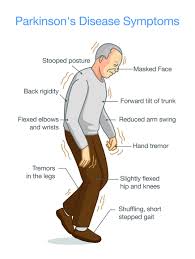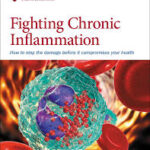Understanding Parkinson’s Disease: Causes, Symptoms, and Treatment

Parkinson’s disease is a progressive neurodegenerative disorder that primarily affects movement control. It develops gradually, often starting with a barely noticeable tremor in just one hand. Over time, the disease can cause stiffness or slowing of movement, impacting daily activities and quality of life.
Causes and Pathophysiology:
The exact cause of Parkinson’s disease remains unknown, but it is characterized by the loss of dopamine-producing neurons in a region of the brain called the substantia nigra. Dopamine is a neurotransmitter crucial for coordinating smooth and balanced muscle movements. The deficiency leads to the hallmark motor symptoms of Parkinson’s. Several factors may contribute to the disease, including genetic mutations, environmental toxins, and age-related changes in the brain.
“Beat the Pressure: A Comprehensive Guide to Lowering Blood Pressure Naturally.”
Buy book from Gumroad or Paystack
Symptoms:
Parkinson’s disease manifests through a variety of motor and non-motor symptoms. The primary motor symptoms include:
- Tremor: Often starting in a hand or fingers, it is most noticeable when the limb is at rest.
- Bradykinesia: Slowness of movement that makes simple tasks challenging.
- Muscle rigidity: Stiffness in the limbs and trunk that limits range of motion.
- Postural instability: Impaired balance and coordination, increasing the risk of falls.
Non-motor symptoms can precede motor signs and include sleep disturbances, depression, loss of smell, cognitive impairment, and autonomic dysfunction such as blood pressure irregularities.
Diagnosis:
There is no definitive test for Parkinson’s disease. Diagnosis is primarily clinical, based on medical history, symptom presentation, and neurological examination. Imaging tests like MRI or DaTscan may help rule out other conditions. Early diagnosis is crucial for managing symptoms and improving outcomes.
Treatment:
While there is currently no cure for Parkinson’s disease, several treatments can help manage symptoms:
- Medications: The most common is Levodopa, which the brain converts into dopamine. Other drugs include dopamine agonists and MAO-B inhibitors.
- Physical therapy: Helps maintain mobility, balance, and flexibility.
- Occupational therapy: Assists in adapting daily activities to improve independence.
- Deep brain stimulation (DBS): A surgical option for advanced cases, involving implantation of electrodes that regulate abnormal brain activity.
Research is ongoing to better understand the disease mechanisms and develop disease-modifying therapies.
Living with Parkinson’s:
Parkinson’s disease affects each person differently, and living with it requires a multidisciplinary approach involving neurologists, therapists, caregivers, and support groups. Lifestyle changes such as regular exercise, a balanced diet, and social engagement can significantly improve quality of life.
Conclusion:
Parkinson’s disease is a complex condition that demands comprehensive care and support. Advances in research continue to offer hope for improved treatments and eventually a cure. Awareness and early intervention remain key to managing the disease effectively.
💔 “She said she loved me. And for fifty-two years, I believed her.” 💔
Buy The Book "The Longest Lie: A Husband’s Journey Through Love, Betrayal, and Redemption" From Gumroad






